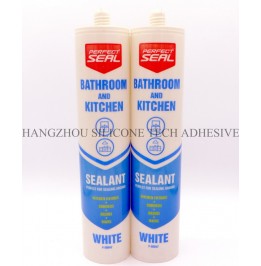Sealants, commonly used in bathrooms, kitchens, and personal spaces, are designed to create waterproof barriers and prevent moisture damage. However, when these materials come into contact with cosmetics—such as skincare products, makeup, or haircare items—they may undergo chemical reactions that compromise their integrity. Understanding the interactions between sealants and cosmetic ingredients is essential for maintaining both aesthetic appeal and structural durability.

Most sealants are silicone-based, polyurethane, or acrylic formulations. Silicone sealants, for example, are prized for their flexibility and water resistance but can degrade when exposed to certain solvents or oils. Polyurethane sealants offer strong adhesion but may react with acidic or alkaline substances. Acrylic variants, while cost-effective, are more susceptible to discoloration from prolonged contact with organic compounds.
Cosmetics often contain oils (e.g., mineral oil, coconut oil), alcohols (e.g., ethanol, isopropyl alcohol), acids (e.g., glycolic acid, salicylic acid), and pigments. Oils can penetrate silicone sealants, causing swelling or softening. Alcohols may dissolve acrylic sealants over time, while acids can etch or discolor polyurethane surfaces. Pigments in makeup products may leave stubborn stains that are difficult to remove without damaging the sealant.
Certain cosmetic pigments, such as those found in lipsticks or foundations, can leave permanent stains on sealants. For example, red or dark-colored pigments may penetrate porous acrylic sealants, creating unsightly marks. Even water-resistant cosmetics can leave residues that attract dirt, further worsening discoloration.
Prolonged exposure to oils or solvents in cosmetics can weaken sealant adhesion. Silicone sealants, when in contact with mineral oil-based products, may lose their elasticity, leading to cracks or gaps. Polyurethane sealants exposed to high-alcohol content cosmetics may harden and become brittle, reducing their ability to flex with temperature changes.
Cosmetic residues trapped in sealant crevices can create a moist environment conducive to mold growth. For instance, creamy skincare products left on bathroom sealants may combine with humidity to form a breeding ground for fungi. This not only damages the sealant but also poses health risks to users.
Avoid applying cosmetics directly onto sealed surfaces. Use counters, vanities, or designated trays to prevent spills. When storing cosmetics, keep them in closed containers away from areas with sealants, such as shower enclosures or sink backsplashes. This reduces the likelihood of accidental contact.
If cosmetics come into contact with sealants, clean them immediately using a damp cloth and mild soap. Avoid abrasive scrubbers or harsh chemicals, as these can scratch the sealant surface. For oily residues, a gentle wipe with isopropyl alcohol (diluted with water) may help, but test it on an inconspicuous area first to ensure compatibility.
Place mats, coasters, or silicone guards around areas prone to cosmetic exposure, such as bathroom vanities or kitchen countertops near makeup stations. These barriers create a physical separation between cosmetics and sealants, minimizing direct contact.
High humidity levels accelerate the absorption of cosmetic ingredients into sealants. Use dehumidifiers in bathrooms or storage areas to maintain optimal conditions. Additionally, avoid exposing sealants to extreme temperatures, as heat can soften materials and cold can make them brittle, both of which increase vulnerability to cosmetic damage.
When applying fresh sealant, ensure adequate ventilation to allow proper curing. Fumes from curing sealants may interact with airborne cosmetic particles, leading to unexpected reactions. A well-ventilated space also reduces the concentration of volatile organic compounds (VOCs) that could affect indoor air quality.
Empty cosmetic containers may retain residues that can leach onto surfaces during disposal. Rinse containers thoroughly before discarding them to prevent accidental contamination of sealants in trash areas or recycling bins.
By implementing these strategies, users can protect sealants from the damaging effects of cosmetics while maintaining clean and functional spaces. Awareness of material interactions and proactive maintenance are key to extending the lifespan of both sealants and cosmetic products.
Copyright 2019 by Hangzhou Silicone Tech Adhesive Co., Ltd. All rights reserved.
Bathroom Sealant | Acrylic Sealant | Dow Corning 795 | Aquarium Sealant | Dow Corning 732 | Clear Silicone Sealant | Polysulfide Sealant | Glazing Sealant | Mirror Sealant | IG Sealant
Powered by Onepound